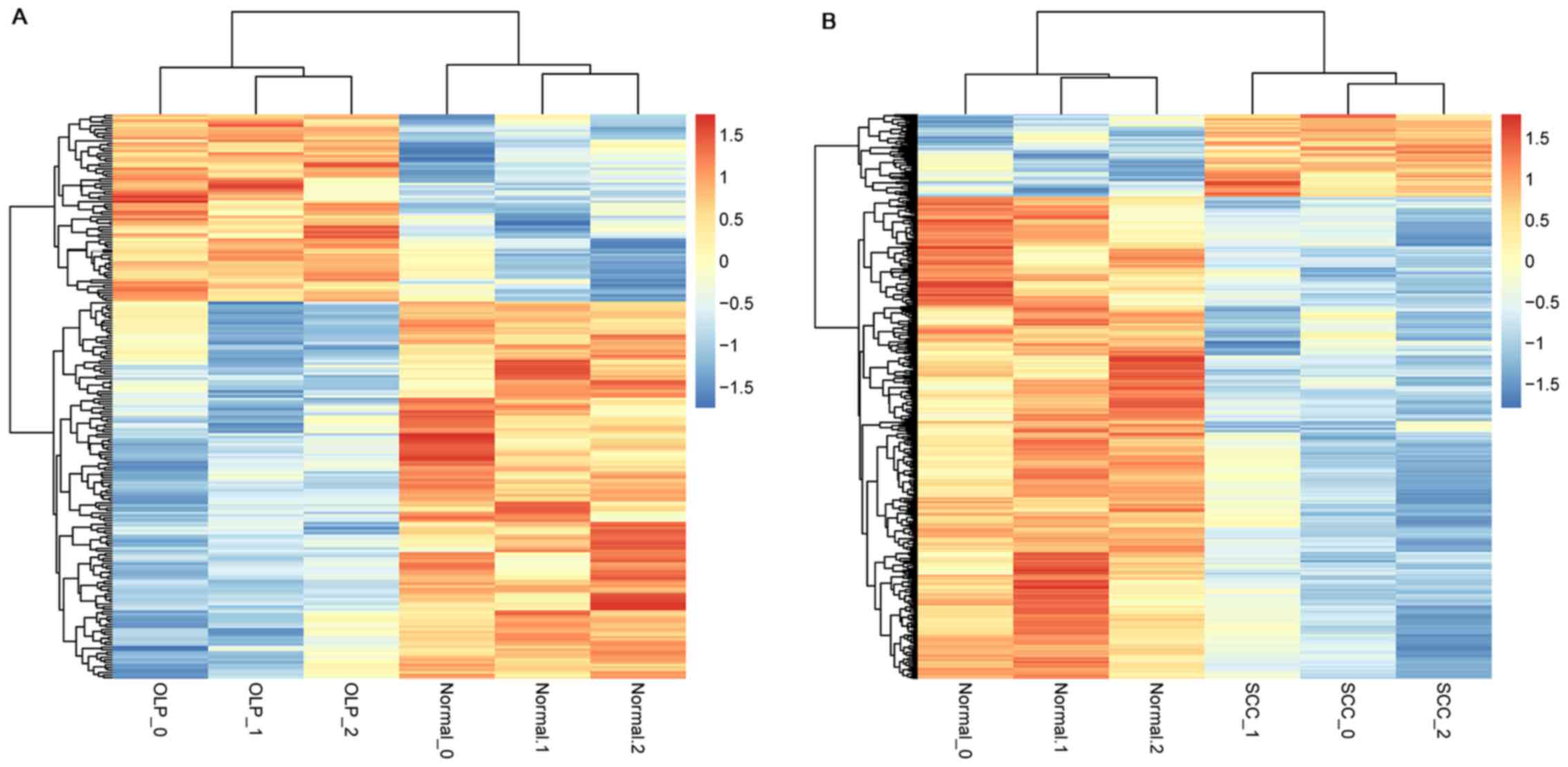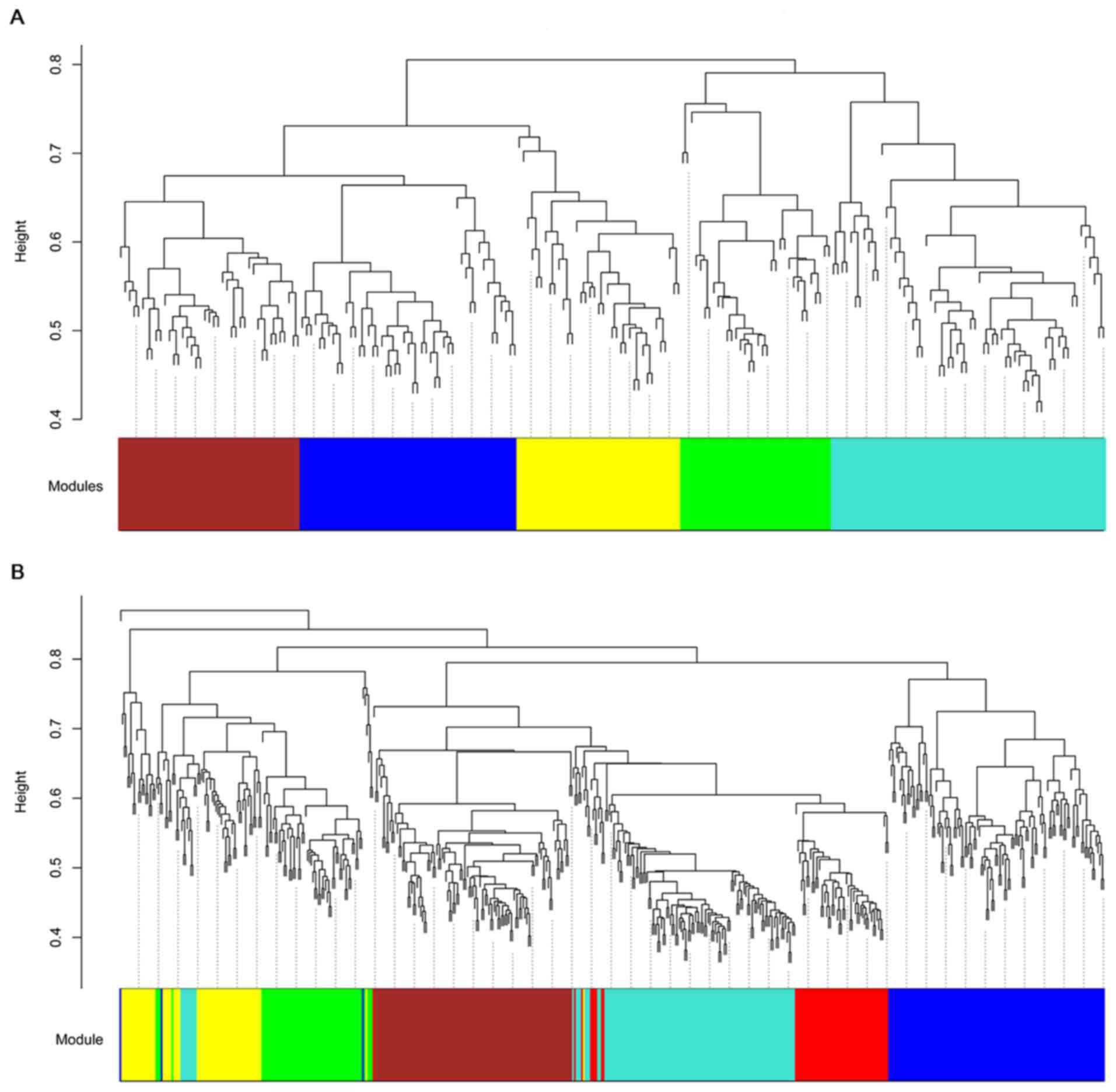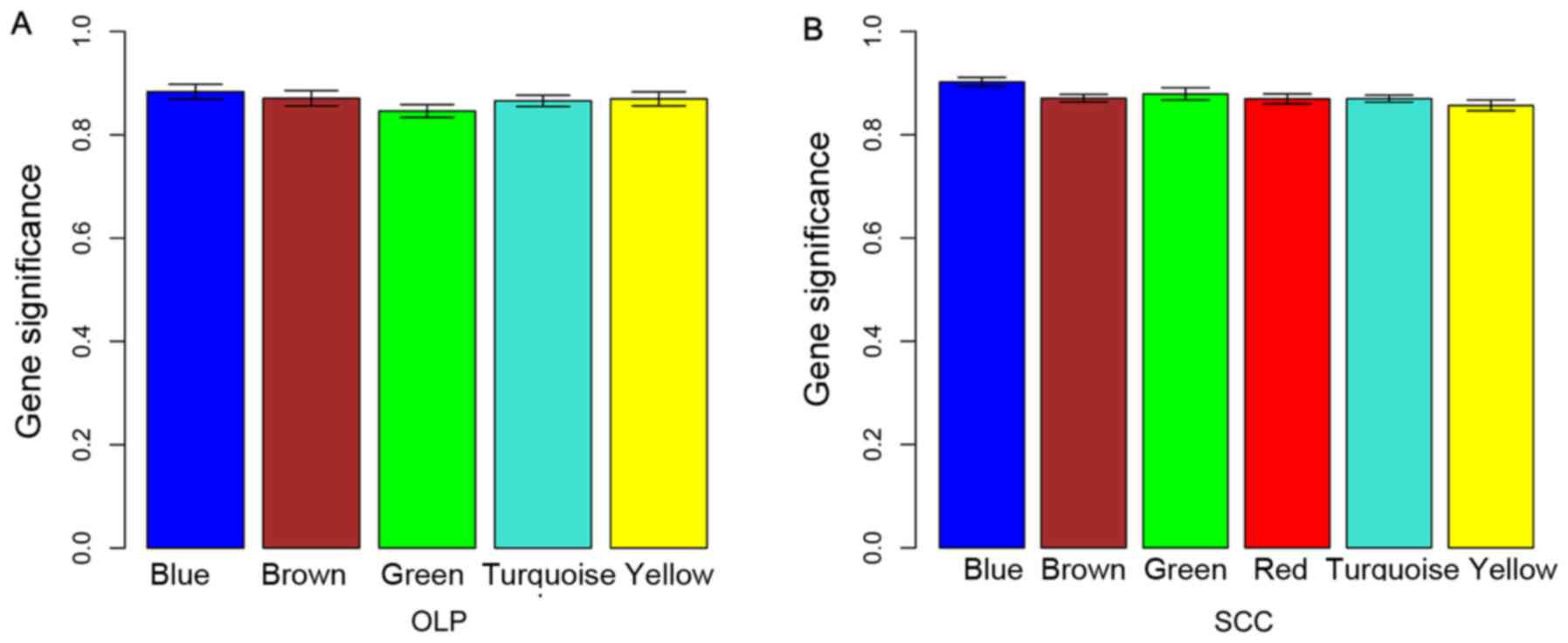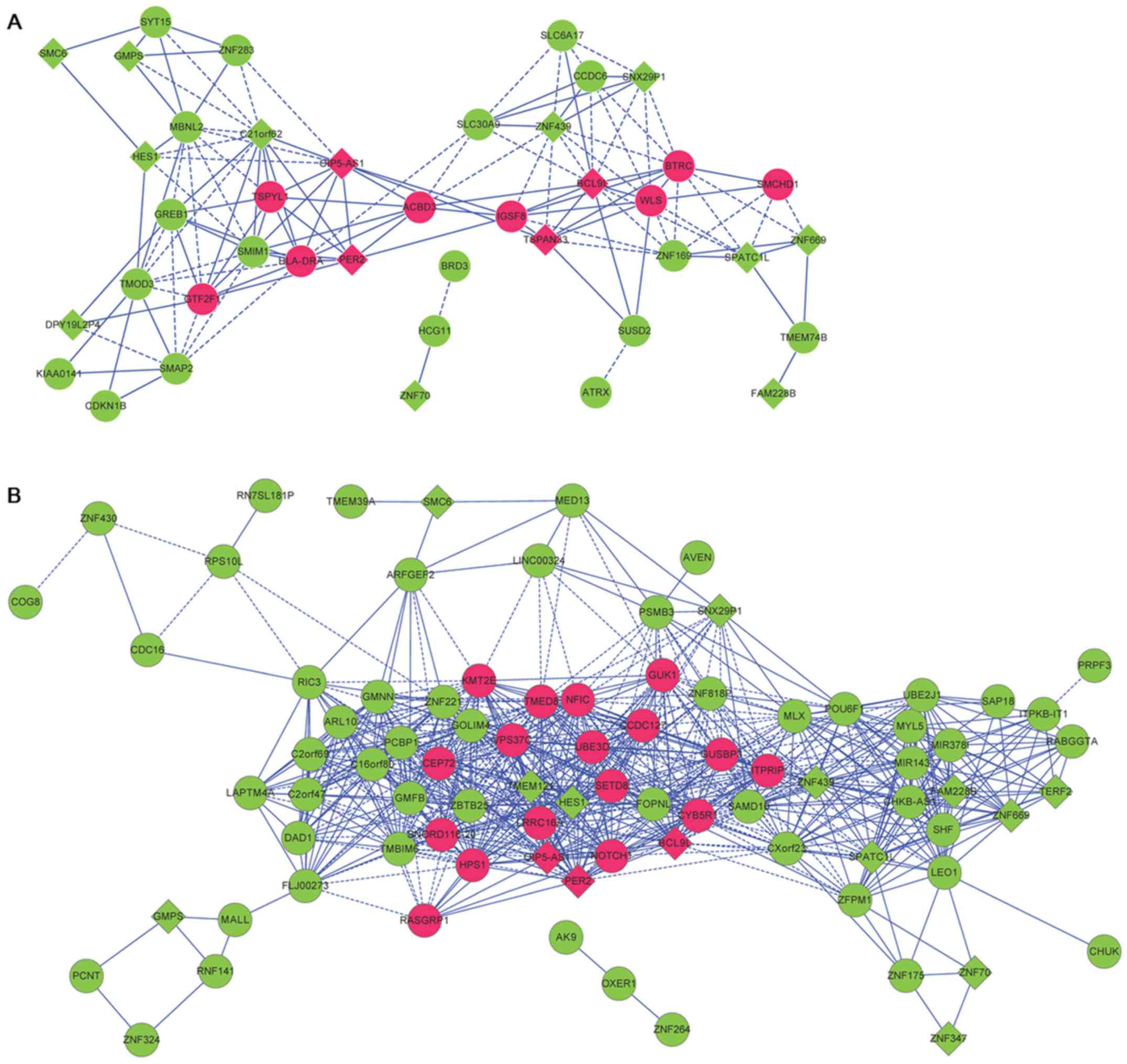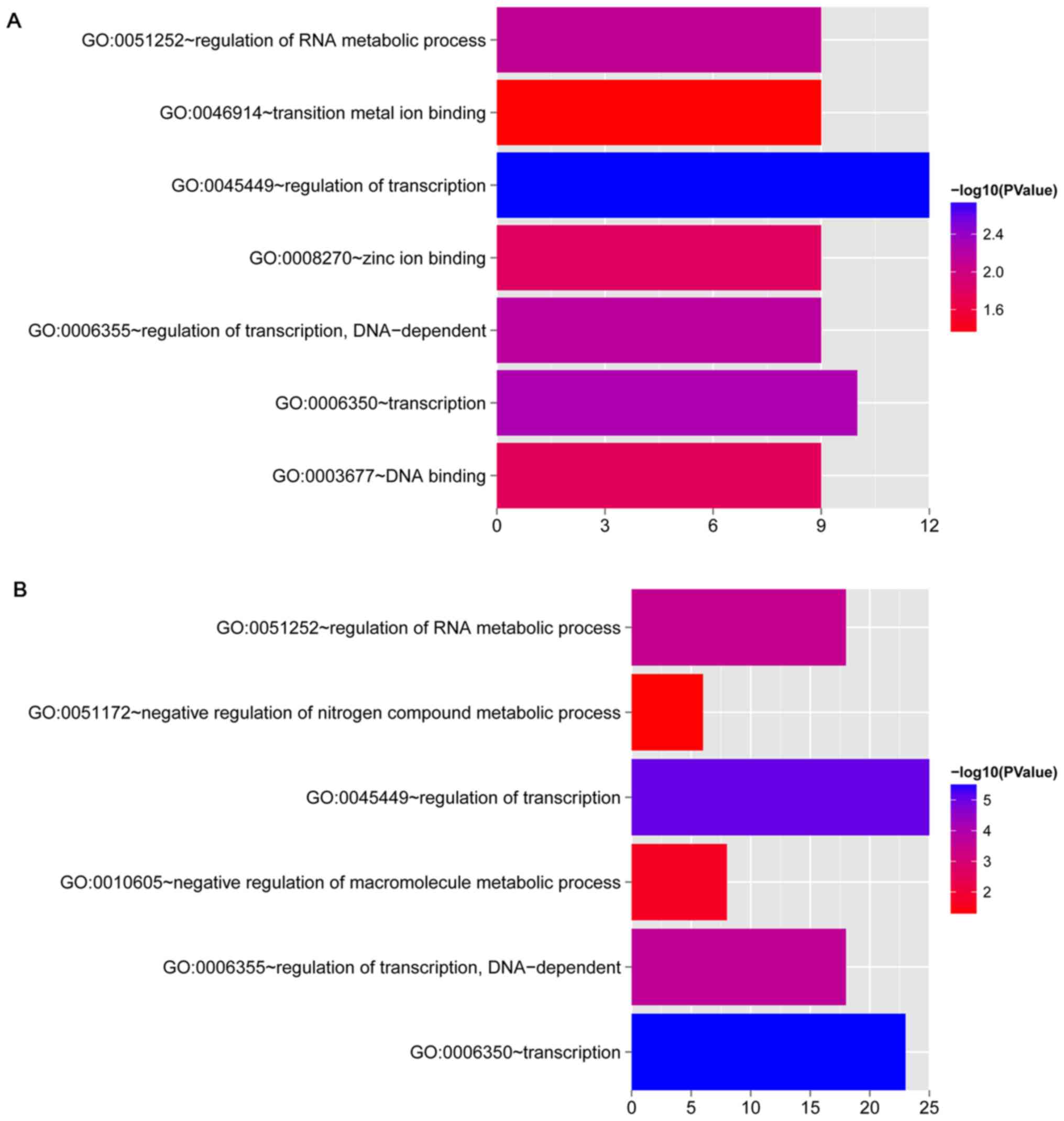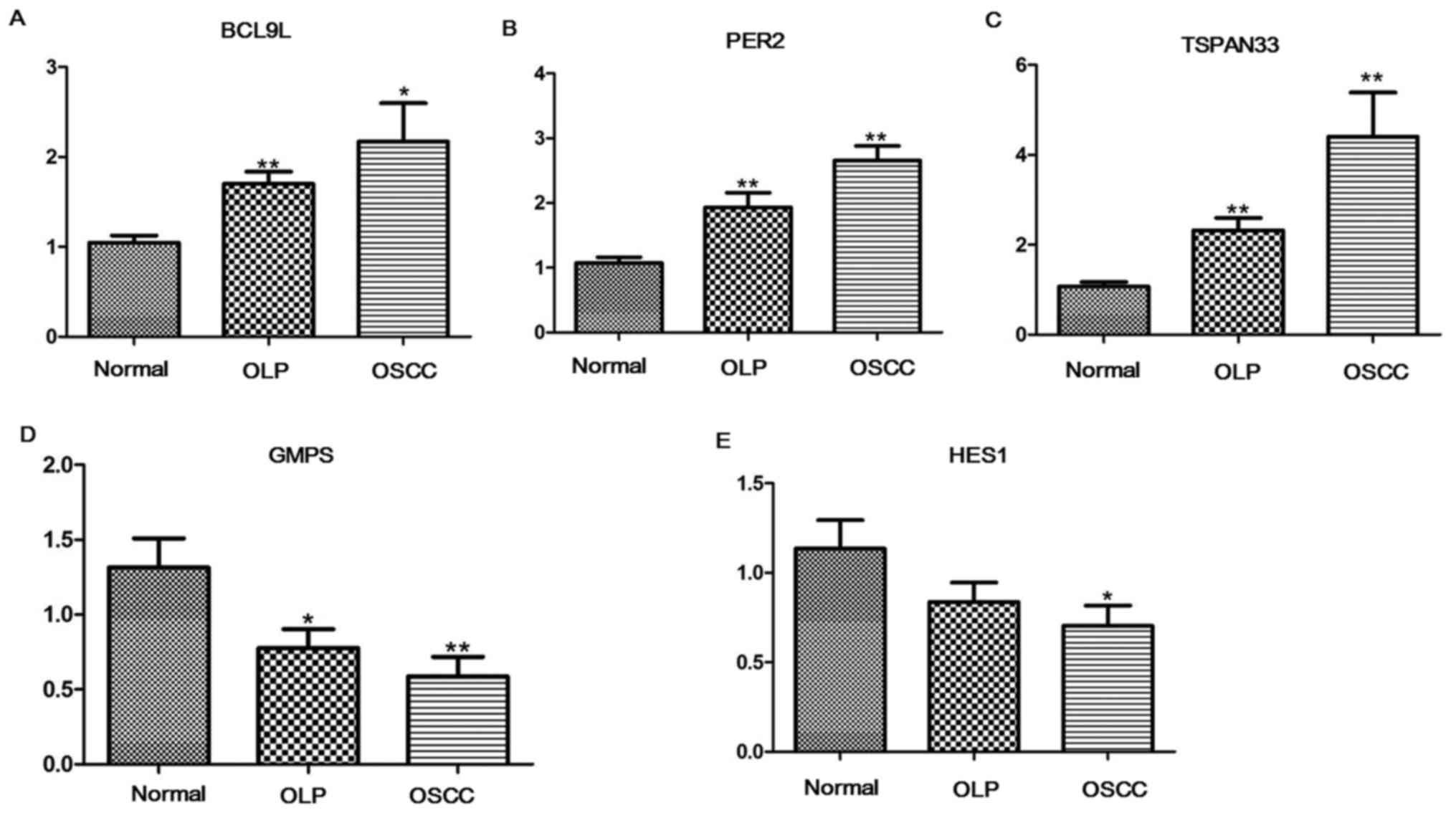|
1
|
van der Waal I: Potentially malignant
disorders of the oral and oropharyngeal mucosa; terminology,
classification and present concepts of management. Oral Oncol.
45:317–323. 2009. View Article : Google Scholar : PubMed/NCBI
|
|
2
|
Warnakulasuriya S, Johnson NW and van der
Waal I: Nomenclature and classification of potentially malignant
disorders of the oral mucosa. J Oral Pathol Med. 36:575–580. 2007.
View Article : Google Scholar : PubMed/NCBI
|
|
3
|
Shen Z-Y, Liu W, Feng J-Q, Zhou H-W and
Zhou Z-T: Squamous cell carcinoma development in previously
diagnosed oral lichen planus: De novo or transformation? Oral Surg
Oral Med Oral Pathol Oral Radiol Endod. 112:592–596. 2011.
View Article : Google Scholar : PubMed/NCBI
|
|
4
|
Au J, Patel D and Campbell JH: Oral lichen
planus. Oral Maxillofac Surg Clin North Am. 25:93–100, vii. 2013.
View Article : Google Scholar : PubMed/NCBI
|
|
5
|
Gillison ML: Current topics in the
epidemiology of oral cavity and oropharyngeal cancers. Head Neck.
29:779–792. 2007. View Article : Google Scholar : PubMed/NCBI
|
|
6
|
Edwards BK, Brown ML, Wingo PA, Howe HL,
Ward E, Ries LA, Schrag D, Jamison PM, Jemal A, Wu XC, et al:
Annual report to the nation on the status of cancer, 1975–2002,
featuring population-based trends in cancer treatment. J Natl
Cancer Inst. 97:1407–1427. 2005. View Article : Google Scholar : PubMed/NCBI
|
|
7
|
Choi S and Myers JN: Molecular
pathogenesis of oral squamous cell carcinoma: Implications for
therapy. J Dent Res. 87:14–32. 2008. View Article : Google Scholar : PubMed/NCBI
|
|
8
|
Patel SC, Carpenter WR, Tyree S, Couch ME,
Weissler M, Hackman T, Hayes DN, Shores C and Chera BS: Increasing
incidence of oral tongue squamous cell carcinoma in young white
women, age 18 to 44 years. J Clin Oncol. 29:1488–1494. 2011.
View Article : Google Scholar : PubMed/NCBI
|
|
9
|
Mollaoglu N: Oral lichen planus: A review.
Br J Oral Maxillofac Surg. 38:370–377. 2000. View Article : Google Scholar : PubMed/NCBI
|
|
10
|
Mignogna MD, Lo Russo L, Fedele S, Ruoppo
E, Califano L and Lo Muzio L: Clinical behaviour of malignant
transforming oral lichen planus. Eur J Surg Oncol. 28:838–843.
2002. View Article : Google Scholar : PubMed/NCBI
|
|
11
|
Chen Y, Zhang W, Geng N, Tian K and
Windsor Jack L: MMPs, TIMP-2, and TGF-β1 in the cancerization of
oral lichen planus. Head Neck. 30:1237–1245. 2008. View Article : Google Scholar : PubMed/NCBI
|
|
12
|
Mazzarella N, Femiano F, Gombos F, De Rosa
A and Giuliano M: Matrix metalloproteinase gene expression in oral
lichen planus: Erosive vs. reticular forms. J Eur Acad Dermatol
Venereol. 20:953–957. 2006.PubMed/NCBI
|
|
13
|
Shi P, Liu W, Zhou Z-T, He Q-B and Jiang
W-W: Podoplanin and ABCG2: Malignant transformation risk markers
for oral lichen planus. Cancer Epidemiol Biomarkers Prev.
19:844–849. 2010. View Article : Google Scholar : PubMed/NCBI
|
|
14
|
Rhodus NL, Cheng B, Myers S, Miller L, Ho
V and Ondrey F: The feasibility of monitoring NF-kappaB associated
cytokines: TNF-α, IL-1α, IL-6, and IL-8 in whole saliva for the
malignant transformation of oral lichen planus. Mol Carcinog.
44:77–82. 2005. View Article : Google Scholar : PubMed/NCBI
|
|
15
|
Zhang Y, Lin M, Zhang S, Wang Z, Jiang L,
Shen J, Bai J, Gao F, Zhou M and Chen Q: NF-kappaB-dependent
cytokines in saliva and serum from patients with oral lichen
planus: A study in an ethnic Chinese population. Cytokine.
41:144–149. 2008. View Article : Google Scholar : PubMed/NCBI
|
|
16
|
Poomsawat S, Buajeeb W, Khovidhunkit SO
and Punyasingh J: Overexpression of cdk4 and p16 in oral lichen
planus supports the concept of premalignancy. J Oral Pathol Med.
40:294–299. 2011. View Article : Google Scholar : PubMed/NCBI
|
|
17
|
Anders S, McCarthy DJ, Chen Y, Okoniewski
M, Smyth GK, Huber W and Robinson MD: Count-based differential
expression analysis of RNA sequencing data using R and
Bioconductor. Nat Protoc. 8:1765–1786. 2013. View Article : Google Scholar : PubMed/NCBI
|
|
18
|
Patel RK and Jain M: NGS QC Toolkit: A
toolkit for quality control of next generation sequencing data.
PLoS One. 7:e306192012. View Article : Google Scholar : PubMed/NCBI
|
|
19
|
Kim D, Pertea G, Trapnell C, Pimentel H,
Kelley R and Salzberg SL: TopHat2: Accurate alignment of
transcriptomes in the presence of insertions, deletions and gene
fusions. Genome Biol. 14:R362013. View Article : Google Scholar : PubMed/NCBI
|
|
20
|
Smyth GK: Limma: linear models for
microarray data. Bioinformatics and Computational Biology Solutions
Using R and Bioconductor. Springer, Verlag New York Inc.; NY: pp.
397–420. 2005, View Article : Google Scholar
|
|
21
|
Ritchie ME, Phipson B, Wu D, Hu Y, Law CW,
Shi W and Smyth GK: limma powers differential expression analyses
for RNA-sequencing and microarray studies. Nucleic Acids Res.
43:e472015. View Article : Google Scholar : PubMed/NCBI
|
|
22
|
Deza MM and Deza E: Encyclopedia of
distances. Springer; 2009, doi: 10.1007/978-3-642-00234–2.
View Article : Google Scholar
|
|
23
|
Kolde R and Kolde MR: Package ‘pheatmap’.
2015.http://cran.r-project.org/web/packages/pheatmap/index.html
|
|
24
|
Szekely GJ and Rizzo ML: Hierarchical
clustering via joint between-within distances: Extending Ward's
minimum variance method. J Classif. 22:151–183. 2005. View Article : Google Scholar
|
|
25
|
Press W, Teukolsky S, Vetterling W and
Flannery B: Section 16.4. Hierarchical clustering by phylogenetic
trees. Numerical Recipes: The Art of Scientific Computing.
Cambridge University Press; New York: pp. 868–881. 2007
|
|
26
|
Oldham MC, Konopka G, Iwamoto K,
Langfelder P, Kato T, Horvath S and Geschwind DH: Functional
organization of the transcriptome in human brain. Nat Neurosci.
11:1271–1282. 2008. View Article : Google Scholar : PubMed/NCBI
|
|
27
|
Liao Q, Liu C, Yuan X, Kang S, Miao R,
Xiao H, Zhao G, Luo H, Bu D, Zhao H, et al: Large-scale prediction
of long non-coding RNA functions in a coding-non-coding gene
co-expression network. Nucleic Acids Res. 39:3864–3878. 2011.
View Article : Google Scholar : PubMed/NCBI
|
|
28
|
Langfelder P, Zhang B and Horvath S:
Defining clusters from a hierarchical cluster tree: The Dynamic
Tree Cut package for R. Bioinformatics. 24:719–720. 2008.
View Article : Google Scholar : PubMed/NCBI
|
|
29
|
Dong J and Horvath S: Understanding
network concepts in modules. BMC Syst Biol. 1:242007. View Article : Google Scholar : PubMed/NCBI
|
|
30
|
Smoot ME, Ono K, Ruscheinski J, Wang P-L
and Ideker T: Cytoscape 2.8: New features for data integration and
network visualization. Bioinformatics. 27:431–432. 2011. View Article : Google Scholar : PubMed/NCBI
|
|
31
|
Falcon S and Gentleman R: Using GOstats to
test gene lists for GO term association. Bioinformatics.
23:257–258. 2007. View Article : Google Scholar : PubMed/NCBI
|
|
32
|
Tweedie S, Ashburner M, Falls K, Leyland
P, McQuilton P, Marygold S, Millburn G, Osumi-Sutherland D,
Schroeder A, Seal R, et al: FlyBase Consortium: FlyBase: Enhancing
Drosophila gene ontology annotations. Nucleic Acids Res.
37:D555–D559. 2009. View Article : Google Scholar : PubMed/NCBI
|
|
33
|
Arocho A, Chen B, Ladanyi M and Pan Q:
Validation of the 2-DeltaDeltaCt calculation as an alternate method
of data analysis for quantitative PCR of BCR-ABL P210 transcripts.
Diagn Mol Pathol. 15:56–61. 2006. View Article : Google Scholar : PubMed/NCBI
|
|
34
|
Mignogna MD, Fedele S, Lo Russo L, Lo
Muzio L and Bucci E: Immune activation and chronic inflammation as
the cause of malignancy in oral lichen planus: Is there any
evidence? Oral Oncol. 40:120–130. 2004. View Article : Google Scholar : PubMed/NCBI
|
|
35
|
Conway C, Graham JL, Chengot P, Daly C,
Chalkley R, Ross L, Droop A, Rabbitts P and Stead LF: Elucidating
drivers of oral epithelial dysplasia formation and malignant
transformation to cancer using RNAseq. Oncotarget. 6:40186–40201.
2015.PubMed/NCBI
|
|
36
|
Jakhesara SJ, Koringa PG, Bhatt VD, Shah
TM, Vangipuram S, Shah S and Joshi CG: RNA-Seq reveals
differentially expressed isoforms and novel splice variants in
buccal mucosal cancer. Gene. 516:24–32. 2013. View Article : Google Scholar : PubMed/NCBI
|
|
37
|
Tang X-H, Urvalek AM, Osei-Sarfo K, Zhang
T, Scognamiglio T and Gudas LJ: Gene expression profiling
signatures for the diagnosis and prevention of oral cavity
carcinogenesis-genome-wide analysis using RNA-seq technology.
Oncotarget. 6:24424–24435. 2015. View Article : Google Scholar : PubMed/NCBI
|
|
38
|
Somoza-Martín JM, García-García A,
Barros-Angueira F, Otero-Rey E, Torres-Español M, Gándara-Vila P,
Reboiras-López MD, Blanco-Carrión A and Gándara-Rey JM: Gene
expression profile in oral squamous cell carcinoma: A pilot study.
J Oral Maxillofac Surg. 63:786–792. 2005. View Article : Google Scholar : PubMed/NCBI
|
|
39
|
Shaffer AL, Yu X, He Y, Boldrick J, Chan
EP and Staudt LM: BCL-6 represses genes that function in lymphocyte
differentiation, inflammation, and cell cycle control. Immunity.
13:199–212. 2000. View Article : Google Scholar : PubMed/NCBI
|
|
40
|
Fan Y, Zhan Z, Peng T, Song XL and Feng
ZQ: The expression of apoptosis-associated proteins Bcl-2, Bax in
oral leukoplakia and lichen planus. Shanghai Kou Qiang Yi Xue.
13:497–501. 2004.(In Chinese). PubMed/NCBI
|
|
41
|
Hadzi-Mihailovic M, Raybaud H, Monteil R,
Cakic S, Djuric M and Jankovic L: Bcl-2 expression and its possible
influence on malignant transformation of oral lichen planus. J
BUON. 15:362–368. 2009.
|
|
42
|
Sousa FA, Paradella TC, Carvalho YR and
Rosa LE: Immunohistochemical expression of PCNA, p53, bax and bcl-2
in oral lichen planus and epithelial dysplasia. J Oral Sci.
51:117–121. 2009. View Article : Google Scholar : PubMed/NCBI
|
|
43
|
Mani M, Carrasco DE, Zhang Y, Takada K,
Gatt ME, Dutta-Simmons J, Ikeda H, Diaz-Griffero F, Pena-Cruz V,
Bertagnolli M, et al: BCL9 promotes tumor progression by conferring
enhanced proliferative, metastatic, and angiogenic properties to
cancer cells. Cancer Res. 69:7577–7586. 2009. View Article : Google Scholar : PubMed/NCBI
|
|
44
|
Pilz RB and Broderick KE: Role of cyclic
GMP in gene regulation. Front Biosci. 10:1239–1268. 2005.
View Article : Google Scholar : PubMed/NCBI
|
|
45
|
Lima FO, Souza GR, Verri WA Jr, Parada CA,
Ferreira SH, Cunha FQ and Cunha TM: Direct blockade of inflammatory
hypernociception by peripheral A1 adenosine receptors: Involvement
of the NO/cGMP/PKG/KATP signaling pathway. Pain. 151:506–515. 2010.
View Article : Google Scholar : PubMed/NCBI
|
|
46
|
Hu X, Chung AY, Wu I, Foldi J, Chen J, Ji
JD, Tateya T, Kang YJ, Han J, Gessler M, et al: Integrated
regulation of Toll-like receptor responses by Notch and
interferon-γ pathways. Immunity. 29:691–703. 2008. View Article : Google Scholar : PubMed/NCBI
|
|
47
|
Okamoto M, Takeda K, Joetham A, Ohnishi H,
Matsuda H, Swasey CH, Swanson BJ, Yasutomo K, Dakhama A and Gelfand
EW: Essential role of Notch signaling in effector memory
CD8+ T cell-mediated airway hyperresponsiveness and
inflammation. J Exp Med. 205:1087–1097. 2008. View Article : Google Scholar : PubMed/NCBI
|
|
48
|
Niranjan T, Bielesz B, Gruenwald A, Ponda
MP, Kopp JB, Thomas DB and Susztak K: The Notch pathway in
podocytes plays a role in the development of glomerular disease.
Nat Med. 14:290–298. 2008. View
Article : Google Scholar : PubMed/NCBI
|
|
49
|
Lee SH, Hong HS, Liu ZX, Kim RH, Kang MK,
Park NH and Shin KH: TNFα enhances cancer stem cell-like phenotype
via Notch-Hes1 activation in oral squamous cell carcinoma cells.
Biochem Biophys Res Commun. 424:58–64. 2012. View Article : Google Scholar : PubMed/NCBI
|
|
50
|
Chen R, Yang K, Zhao N-B, Zhao D, Chen D,
Zhao CR and Tang H: Abnormal expression of PER1 circadian-clock
gene in oral squamous cell carcinoma. Onco Targets Ther. 5:403–407.
2012.PubMed/NCBI
|
|
51
|
Fu X-J, Li H-X, Yang K, Chen D and Tang H:
The important tumor suppressor role of PER1 in regulating the
cyclin-CDK-CKI network in SCC15 human oral squamous cell carcinoma
cells. Onco Targets Ther. 9:2237–2245. 2016.PubMed/NCBI
|
|
52
|
Liu J, Malkani G, Shi X, Meyer M,
Cunningham-Runddles S, Ma X and Sun ZS: The circadian clock Period
2 gene regulates gamma interferon production of NK cells in host
response to lipopolysaccharide-induced endotoxic shock. Infect
Immun. 74:4750–4756. 2006. View Article : Google Scholar : PubMed/NCBI
|
|
53
|
Hemler ME: Tetraspanin proteins promote
multiple cancer stages. Nat Rev Cancer. 14:49–60. 2014. View Article : Google Scholar : PubMed/NCBI
|
|
54
|
Luu VP, Hevezi P, Vences-Catalan F,
Maravillas-Montero JL, White CA, Casali P, Llorente L, Jakez-Ocampo
J, Lima G, Vilches-Cisneros N, et al: TSPAN33 is a novel marker of
activated and malignant B cells. Clin Immunol. 149:388–399. 2013.
View Article : Google Scholar : PubMed/NCBI
|



